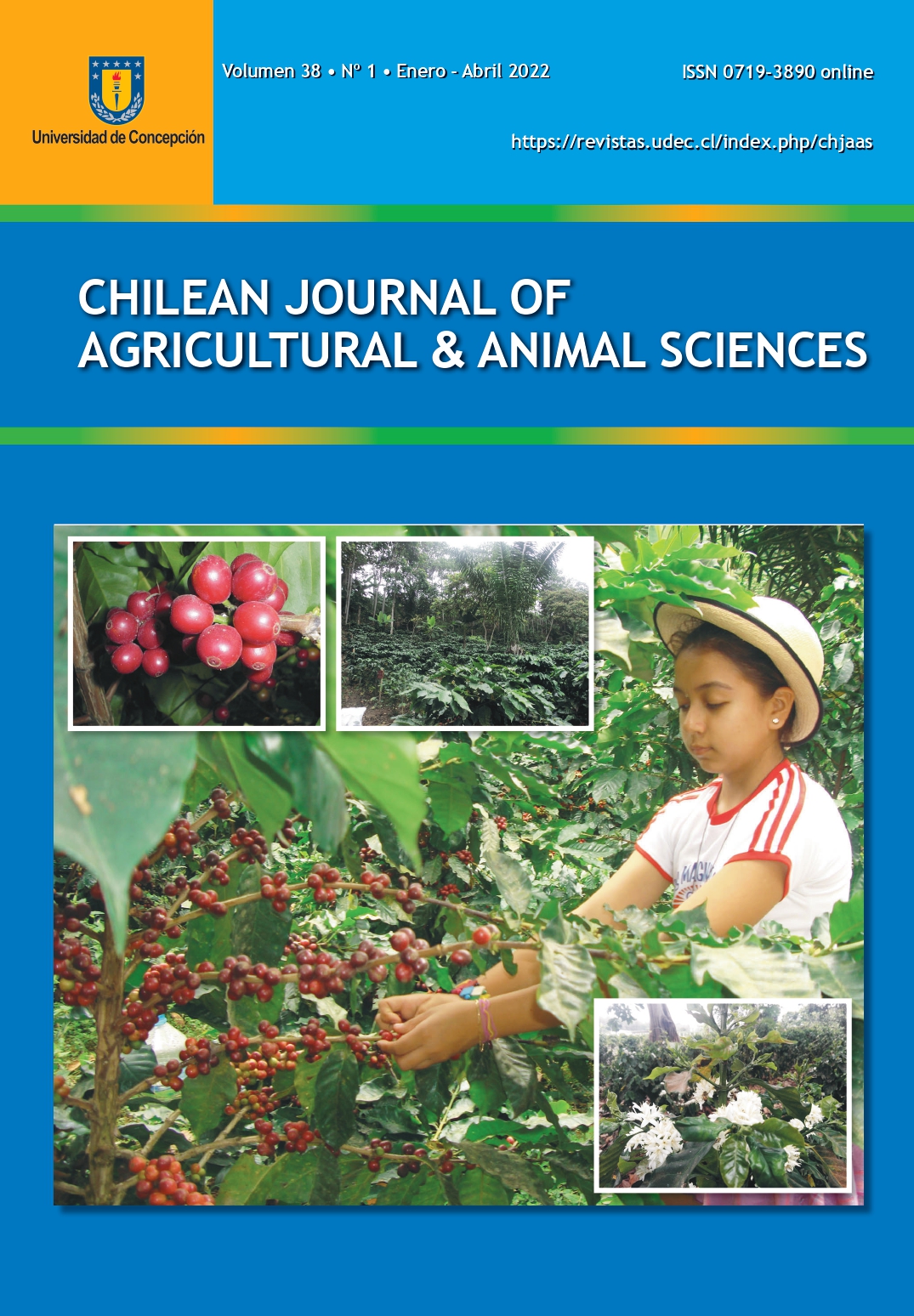COMPARISON BETWEEN THE EFFECTIVENESS AND SENSITIVITY OF THE SUGAR SHAKE METHOD VERSUS THE SOAPY WATER WASHING TECHNIQUE TO DETECT PHORETIC MITES OF Varroa destructor
DOI:
https://doi.org/10.29393/CHJAAS38-5CBRP30005Palabras clave:
Effectiveness, sensitivity, mite, infestation rateResumen
Colony infestation caused by Varroa destructor is a major concern in the apiculture industry because it often results in production losses and reduced colony survival. Over the years, several diagnostic methods have been developed to estimate Varroa infestation levels in a colony, being Soapy Water Washing (SWW) and Sugar Shake (SS) the most widely used methods. However, the effectiveness and sensitivity of the latter remain unclear. This represents a potential risk for beekeepers who use SS as it could lead them to underestimate the infestation level of their colonies, potentially delaying treatment application. The objective of this study was to evaluate the effectiveness and sensitivity of SS as compared to the “gold standard” SWW, for the detection of V. destructor in adult bees. Ninty-nine samples were collected and divided into 3 groups according to infestation rate (IR): low (<3%); medium (3.01-5.0%); and high (?5.01%). It was found that the SS and SWW methods showed 76.6% and 100% effectiveness of mite removal, respectively (p< 0.05). The sensitivity of SS was lower as compared to SWW. In samples with a low IR, 5 of them resulted in false negatives and 23 had a poorly estimated IR. This did not occur in samples with a medium or high IR. Our results suggest that the SS method is less efficient in detecting and removing phoretic mites in adult bee samples, which can underestimate Varroa infestation levels, especially when the number of mites is low.
Descargas
Publicado
Cómo citar
Número
Sección
Derechos de autor 2022 Universidad de Concepción

Esta obra está bajo una licencia internacional Creative Commons Atribución 4.0.







